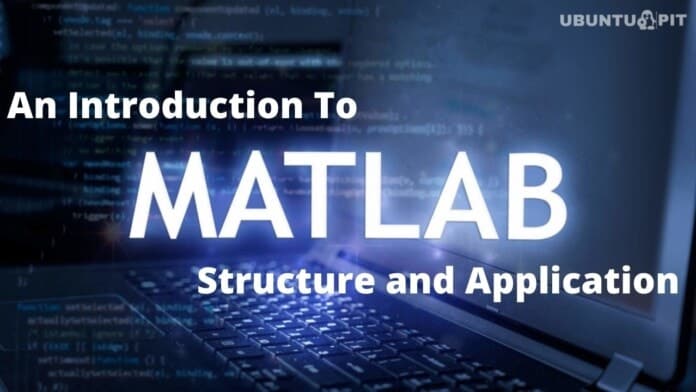Programming is the core of a modern computer. You can not even think of an alive computer without programming. There are several languages to do computer programming, and each of them has its special field. Some are known for scientific computation, and some are specialized for making the building blocks of an operating system. MATLAB is also a very popular programming language. Today we are going to get an absolute introduction to MATLAB and its wide application in today’s world.
Although there is a wide variety of programming languages available there in the virtual world, we have chosen MATLAB for several important reasons. It is a compact language for heavy-duty works. We are going to discover each and every detail of MATLAB in this journey. Stay with us to learn. The more you know, the more you grow.
MATLAB at A Glance
MATLAB is a high-performance programming language to do visualization, mathematical and scientific computation, etc. Basically, it is known for numerical analysis. You have a chunk of data and have absolutely no clue how you are going to get information from them; no need to worry. MATLAB is there to do the tough and tedious computations for you.
The main audience of MATLAB is engineers and scientists. Analyzing and manipulating data, creating models based upon them, developing complex algorithms are some common applications of MATLAB.
MATLAB is the short form of Matrix Laboratory. The soul of this language is a matrix-based language named MATLAB language. Computational mathematics is getting easier and easier day by day by MATLAB.
Academia or industry, MATLAB has its own place everywhere. The recent trends like machine learning, deep learning, control system engineering are hugely dependent upon MATLAB. Also, computational biology, computational finance are dependent upon it.
MATLAB is a multi-paradigm language. You can use it in the way you need it. You can do your functional works with it, as well as you can get object-oriented approaches and visualization with MATLAB.
If we talk about visualization, the plotting is the most popular and useful feature of MATLAB. If you work with SIMULINK along with MATLAB, you will get a whole new dimension to work with. You can do whatever you want. Interaction with other languages like C, Cpp, Python, Java is another feature of MATLAB.
A Short History
In the beginning, MATLAB was not developed as a programming language. It was an interactive matrix calculator only. No place for complex computations, no place for graphics or visualizations.
The first ancestor of MATLAB was EISPACK. It was published in 1971. It was developed by using the Algol approaches for problems related to eigenvalues. In 1975, another package was released named LINPACK. It was born in Fortran. They were made to serve certain purposes, but both of them failed to serve them properly.
Later, MATLAB was written in Fortran had only one data type-matrix. The writer of MATLAB was a teacher of linear algebra and was quite obsessed with matrices. It was made as a hobby and had no commercial plan.
MathWorks inc released the first commercial MATLAB in 1985. It was the beginning. Later it is evolved tremendously, and now we have the present version of MATLAB capable of computing differential equations, Fourier transformations, plotting complex curves, have a bunch of data types along with matrices.
How Does MATLAB Work?
MATLAB has basically five elements. The basic structure of MATLAB is another important part of the introduction of MATLAB. In brief, they are:
1. Environment
An environment is a necessity for the development of any project. MATLAB also has a development environment that consists of a command window, an editor, a debugger, and a command history. Also, you can find external links for getting online help, documentation for offline help, etc.
2. Mathematical Function Library
MATLAB has a rich library consisting of many mathematical functions. It covers from the basic functions to more advanced functions. Even it has differential equation solving capability.
3. Language
MATLAB language is basically made of matrix language that also has functions, flow statements, data structure, object-oriented programming, etc.
4. Graphics
Simulating and plotting are two inherent features of MATLAB, so it has a highly eye-catchy graphics module. You can display any matrix or any vector as graphs in MATLAB. Also, three-dimensional visualizations, animation, image processing, signal processing is available in MATLAB.
5. External Interfaces
You can write with FORTRAN or C codes here that interact with the basic MATLAB codes. MATLAB is used as a computational engine here.
Applications of MATLAB
If we want to talk about the capabilities of MATLAB, then an individual book is to be written over that. A post about the introduction to MATLAB without noting some of its applications is an incomplete one. Here we shall see only some notable sectors where MATLAB is known for its amazing performance.
1. Automated Driving
Along with MATLAB, you have to have the SIMULINK for this purpose. When you are talking about an automated car, you have to consider several points. You must cover works about the sensors, dynamics, scenarios, detection, controlling, tracking, localization, etc.
Using MATLAB and SIMULINK, you can easily manipulate real-time data and develop algorithms for maintaining the previously mentioned factors. Digital image processing also plays a vital role here, and MATLAB is also a great solution for that.
2. Robotics
You can use MATLAB and SIMULINK to develop the core design, can simulate and also can verify any automated system’s dynamics. Modeling any robotic system with precision is quite easy here. Also, you can get an idea about the vibration of motors and noise of sensors with MATLAB and SIMULINK combination.

The accurate dynamics, kinematics simulation, as well as optimization of them can be done here. Any complex robotic algorithm can be developed and verified with the help of MATLAB.
3. Machine Learning
One of the most popular uses of MATLAB in recent times is in the sector of machine learning. You can have advanced signal processing capability in MATLAB. Also, extracting information from existing data is highly efficient in MATLAB. It does compare and trains models with ease.
Another great aspect of MATLAB in the field of machine learning is that you can get automatically generated C/C++ code which you can use for embedded applications.
Also, automated machine learning is available in MATLAB. You can use the Bayesian optimization technique for tuning purposes. The scaling level is quite huge, and performance is really praiseworthy.
4. Deep Learning
You can easily incorporate it with any of your applications with simple and concise MATLAB codes. Let’s say you want to move to the practical world of Artificial Intelligence-driven systems from deep learning models. MATLAB has made this transition way easier than most other applications.

Processing any signals or time-series data or any photo and video with MATLAB is highly effective. You have the advantage of having interactive apps in order to preprocess data. Also, you can train and evaluate different types of models and can simulate them with the help of MATLAB. For automatic defect detection, to convert brains signals into languages are some other examples of the application of MATLAB-based deep learning.
5. Power Electronics Control Design
You can easily develop control systems for any battery system, motors, etc, using MATLAB and SIMULINK. For closed-loop systems, control engineering is needed to optimize the outputs. Several algorithms can be executed to control the output. You can generate the control engineering code with MATLAB with a reduction of 50% of the project time compared with other applications.
You can get easy access to plenty of readymade electrical modeling components and simulations with MATLAB. Both the classical designing techniques like the root locus, bode plot and the automated designing techniques like PID tuning can be used in MATLAB. You have free access to every technique. Just pick the one you need and start your work.
6. Power Systems Analysis and Design
With the help of MATLAB, SIMULINK, and SIMSCAPE, you can get the modeling, simulations, and control of any electrical system across air, land, and water. Electric transportation and grid monitoring can be done comfortably in this environment.
Designing any microgrid system with the SIMSCAPE can reduce the cost of any project and can increase effectiveness. You can explore the system operations if you run simulated scenarios along with the main project with concise codes. This helps you to get an idea about the main work you are doing as well as helps you to predict the output of the project.
7. Railway Systems
The railway engineers need to design control systems for locomotives, rolling stocks, interlocking systems, etc. for this purpose, model-based design is needed. MATLAB and SIMULINK are pretty much useful to improve the design quality and cost-effectiveness of these systems.

Whether you are thinking about train control or the traction control, or braking, you must have an immense amount of electronics in the recent systems. In order to control them effectively, you have to have effective controlling software. And this is the working sector of MATLAB.
The signaling and interlocking systems of locomotives is another complex field and needs very sophisticated controlling. Synchronizing the railway traffic and integrating the interlocking system needs to be done very carefully. This delicate software needs high effectiveness because many lives depend upon them.
8. Embedded Systems
Embedded systems are the heart of modern engineering systems. You can easily use MATLAB and SIMULINK to generate codes, can design and also verify your embedded systems. You can generate optimized C, C++, Verilog codes from it and can run it on hardware.
Also, integrating any generated codes with the dynamic and static libraries in your application can be done. SIMULINK can generate any code with the twinkling of eyes. You just have to know how to use them in your works.
Developing any simulation-based codes and executing them with MATLAB is quite fun. MATLAB significantly reduces the workload of the embedded coders.
9. Data Sciences
One of the most known working fields of MATLAB is data science. Data scientists find it easy to access, process existing data and can generate effective information from them as well. MATLAB has made it very, very easy. MATLAB graphics does document data analysis with comfort. Also, you can automatically convert any machine learning model into a C/C++ code.
Preprocessing any extracted data is the most tedious thing a data scientist has to do. MATLAB has made it less time-consuming and more effective. From any real-time sensor data or any image to text data, MATLAB highly reduces the preprocessing time. Visualizing any data to understand the existing trends as well as identifying the data quality is made a lot easier here.
10. Neuroscience
Like data science, processing any experimental data, driving different types of experiments is also needed in the neuroscience sector. Simulating models of various brain circuits can be done with MATLAB and SIMULINK. You can analyze real-time neural time series data from electrode signals directly. This direct access to raw data has made this analysis more precise and accurate.

As MATLAB has a notable effect in the field of deep learning and machine learning, any neuroscientist can also use the models trained with neuroscience data in order to do predict and classify anything. Generating and processing live data streams and behavioral systems can also be done with MATLAB and SIMULINK.
11. Metals, Mining, and Metallurgy
Optimizing the throughput, minimizing the downtime, and increasing the safety are some factors that are manipulated by the metallurgists with MATLAB and SIMULINK. As mining is highly expensive work, simulating the operations before the real-time expedition is quite like a must here. The data extracted from sensors are analyzed thoroughly, and then using artificial intelligence to simulate the expeditions is done with MATLAB.
Predictive maintenance systems are developed by using several numerical techniques with ease with the help of MATLAB. Also, machine learning helps to troubleshoot processing problems with historical data. Many data were unreadable in previous times that are now turned into the usable and filtered format by MATLAB. This data has really helped a lot to make mining easier than ever before.
12. Biotechnology and Pharmaceuticals
Medical scientists use MATLAB and SIMULINK in order to do multidisciplinary data analysis. Here many data streams are obtained from images, signals, or from genetic factors. Combining all of them is really a tough challenge. MATLAB helps a lot to hybridize these data.
In the case of drug development, modeling and simulation are done. Also, optimizing pharmaceutical production is another challenge that is met with the help of MATLAB. Medical devices have gained a new level of efficiency in recent days. Even MATLAB gives reports in different output formats (like Microsoft Word or PowerPoint) for the convenience of a doctor.
Actually, only a few of the applications of MATLAB is noted here. There are many more that is not covered here. Actually, none can cover all of them in a single post. What I have covered is enough to convince anyone of the necessity of MATLAB in recent days.
Many, Many Applications… But, Is It Hard to Learn MATLAB?
If we want to give a one-liner, that is not possible. For applications, MATLAB is really useful. You have plenty of ready-made tools to work with. So, there are many advantages. Whether you are an expert or a beginner, you can easily learn MATLAB. But if you have any previous experience of programming in any preliminary level language, it would be easy for you.
As MATLAB has many built-in tools, so memorizing them needs some time and effort. It is really painful to find each of them in the middle of any work. So keeping them in mind helps to write codes with ease.
Finally, Insight
MATLAB is almost like a magic tool for any scientist or engineer. The usability, as well as the vast application field, has made it the most enriched programming language of computer history. From normal mathematical coding to sophisticated project simulations or predictive engineering-MATLAB has its own place everywhere. The fun thing is, there are very few competitors in each of the fields that can confront MATLAB. It has autonomy quite in every sector.
This post was a basic introduction to MATLAB only. It has not covered any detail about the actual coding. In future posts, I shall cover them as well. Stay with us to learn MATLAB.
